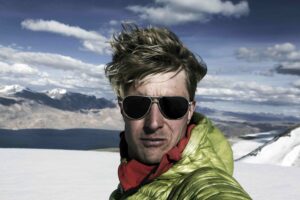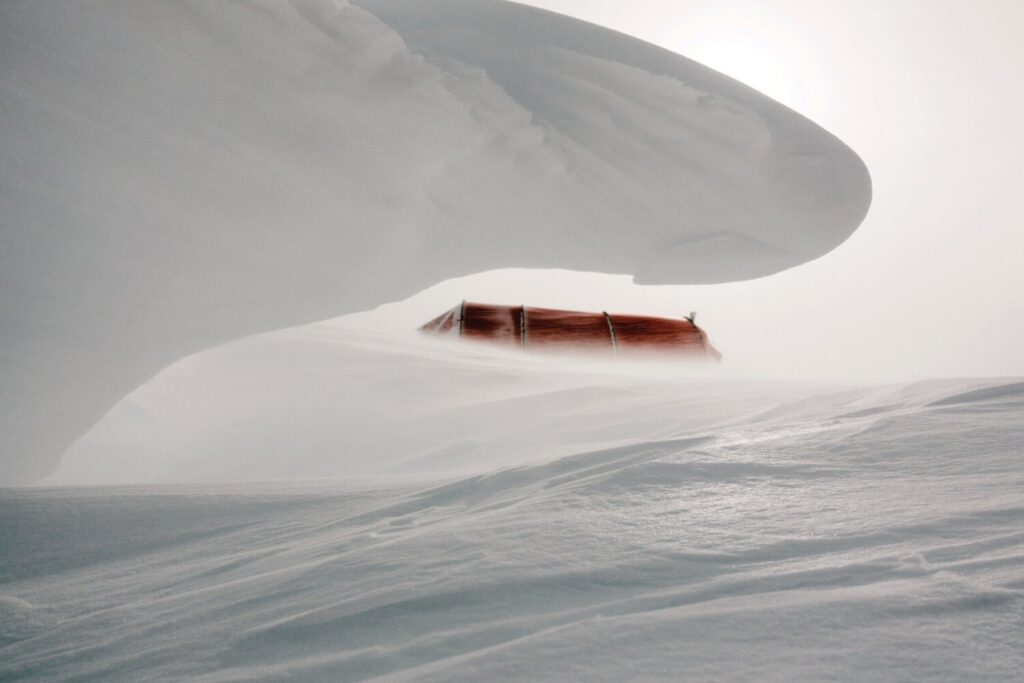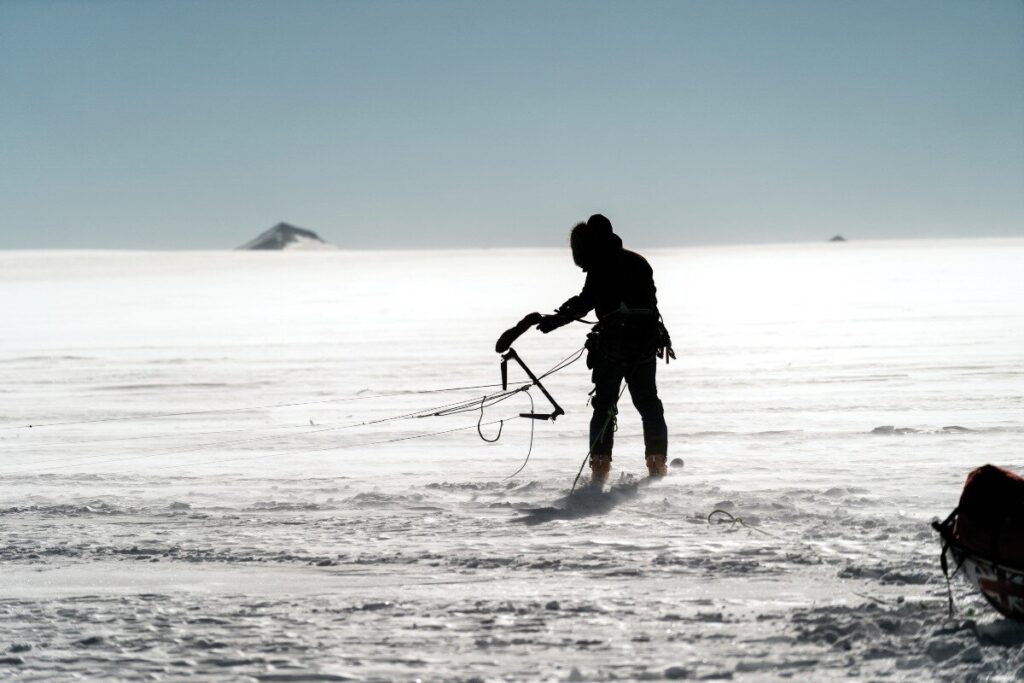Leo Houlding is one of Britain’s most innovative modern explorers. He began his career in the 1990s, where he was quickly recognised as one of the best rock climbers in the UK, before he exported his talents to the big granite walls of Yosemite Valley in California – the greatest climbing arena in the world. A few years later, Leo began BASE jumping, using a wingsuit to descend from big wall climbs in an experimental style known as para-alpinism. After major expeditions to Baffin Island and the Tepuis of Guyana, he has recently moved into Antarctic exploration. In 2012, he pioneered the first ascent of the north east ridge of Ulvetanna in Queen Maud Land, and more recently made an even more ambitious journey to climb one of the world’s most remote peaks, the Spectre in the Transantarctic mountains – featured on the front cover of issue 1– by kite skiing over 1000 miles there and back in a completely new style of polar expedition.
I spoke with Leo in the spring of 2019 about his extraordinary life and climbs, the landscape of risk, and to find out what adventure means to him.
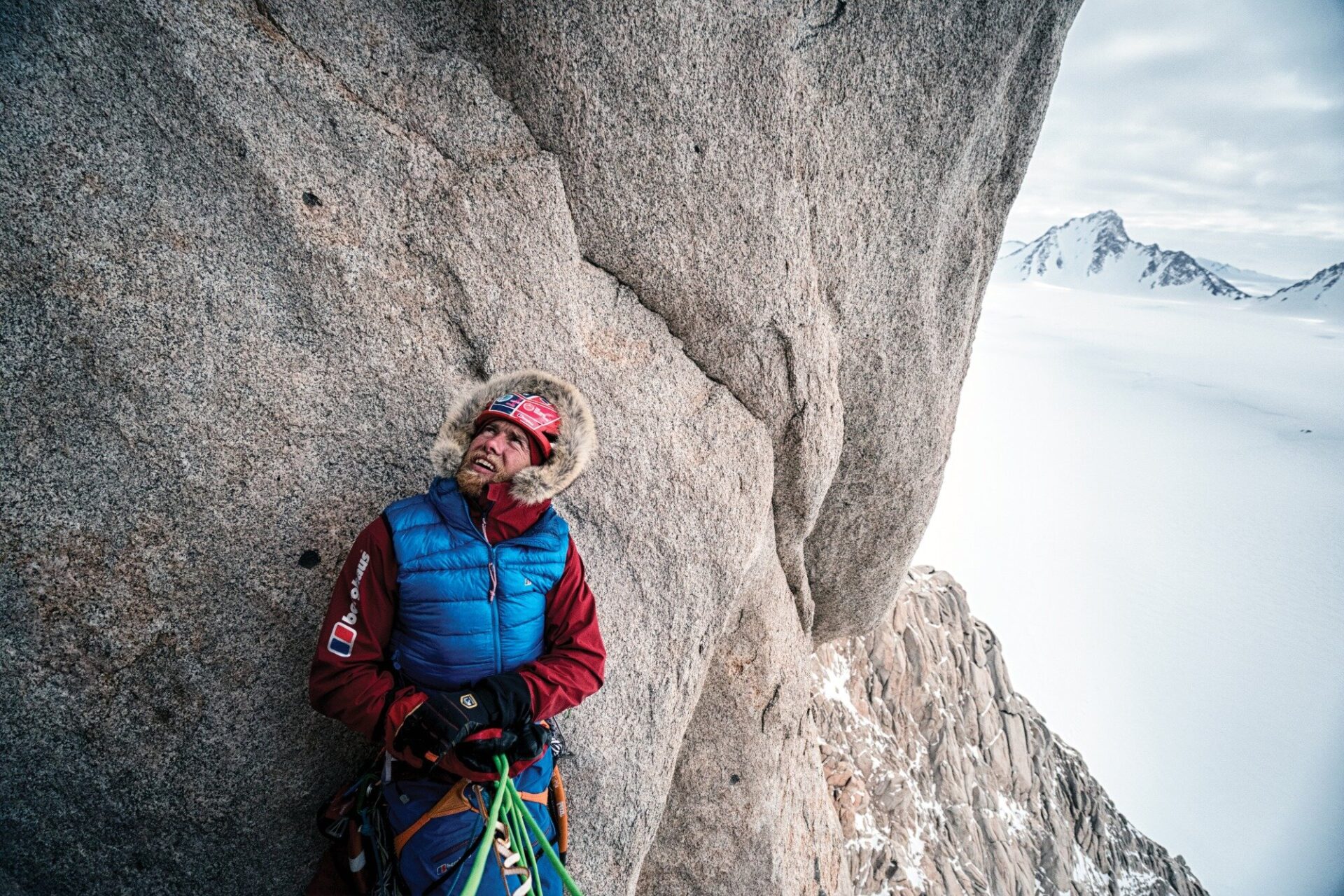
Leo strides into my kitchen overflowing with energy. It’s a couple of years since we last met; I notice how his face is lined from the sun and icy wind of Antarctica. I point out that he seems older and wiser, and laughter erupts between us. As I put the coffee on, I ask him about his formative years climbing the Lake District and North Wales as a teenager:
As a nine year old, I remember saying to my dad how much I wanted to go climbing. As a young kid I always used to scramble, but there was no roped climbing. Then one of my dad’s friends finally took us climbing at a small crag in the Lake District. I strongly remember the first route I did; I just knew I wanted to climb more.
I point out that adventurous climbing has always attracted free spirits and wild characters. Was the legendary counter-culture in British climbing in the 1990s a strong influence?
In the early days, climbing was totally about self expression, just having adventures in wild places. And different ways of living were a big part of it. The life of climbing, rather than the sport, you could say. Malcolm ‘Pike’ Cundy was a key influential character. He was a carpenter based in the Pennines, but he was a climber first and foremost. He was part of the Snell’s Field crew of British climbers who went to Chamonix every summer back in the 1980s. His influence was strong. Perhaps because he never had a son he sort of treated me like one. For a few years, every other weekend he took me climbing and showed me the ropes. He was a mentor and a great guy. His stories were fantastic, and I loved his eccentricity.
By his teens, Leo was climbing some of the hardest and boldest rock climbs in the UK. At what moment, I wonder, did he realise he had a special talent?
One of the key routes was a climb called The Torture Board at Reecastle crag in Borrowdale. There’s picture of it in the old Borrowdale guidebook, and it seemed unimaginably difficult to me. I did it when I was about 15. I remember I just thought holy shit, I did it.
In 1997, Leo climbed a route called Master’s Wall on a high mountain crag in North Wales. It was a special ascent because he climbed it onsight, without any prior knowledge. It’s still regarded as one of the most impressive ascents ever achieved in this style in British rock climbing; a fall from the hardest section of this route would mean serious injury or death. What kind of headspace, I wondered, enabled him to make this ascent?
I think Master’s Wall was important. I’d had a really good summer, I did quite a lot of free soloing [climbing unroped] in North Wales, and I was in the zone for bold climbing. But the experience itself was terrible, I thought I was going to die.
And didn’t you do it in a borrowed pair of rock shoes that were a couple of sizes too big?
Yeah, I did. My own shoes were completely worn out, with holes in the toes, so I’d borrowed another pair. I was totally at the limit on that route. I think it was the closest I’ve ever come to a really serious accident – something even worse than my accident in Patagonia in 2002. I remember going up and down, then committing to a sequence and getting to a positive hand-hold that was wet, and the next bit was miles harder than I thought. I couldn’t wait to get rescued, so I just carried on. I don’t know what I was thinking. But I was sixteen and bold as love. I don’t think I’ve ever put myself in such a risky position since.
We talk about the recent shift towards athletic performance in climbing over adventure, about how training and teetotalism have replaced the sex, drugs and rock n’ roll that British climbing was once famous for. Is he glad he experienced that more anarchic era?
Absolutely. Climbing has changed so much in recent years. You could possibly draw a parallel between climbing and dance music. Where once it was grungy and loose, now it’s this highly manufactured and refined product. And in a way climbing has gone through a similar thing, where it’s now become this indoor fitness activity for a lot of people. The wildness hasn’t gone from climbing, but there’s just less of it as a proportion of the whole activity. I’m not against this change though. It’s just amazing what’s being done now by young climbers in Europe and elsewhere.
I ask Leo about his first ever trip to Yosemite – the greatest big wall climbing arena in the world – in 1998, when he made the second ascent of the cutting edge route El Nino with Patch Hammond. To what extent, I wondered, was that a watershed moment in his life? Leo’s eyes light up.
It was a revelation. The summer of 1998 wasn’t such a great summer in North Wales, so Patch and I went to Yosemite where we intended to hunt out bold single pitch routes like those we’d been climbing in the UK. Then I saw El Capitan for the first time, and it was just so much more impressive than anything I’d seen before by orders of magnitude. I was overwhelmed by the scale and majesty of it. Patch and I quickly made friends with a bunch of influential people, the great Yosemite climbers of that era. I think I climbed every single day we were there. The Huber brothers [the famous German big wall climbers] convinced us that we should have a go at El Nino. And we did it. I remember leaning against the summit tree when we got to the top, and thinking that my life had changed.
So El Nino opened a door?
Yes, in terms of the possibilities for climbing new routes particularly. El Nino back then was only the 4th or 5th free route on the whole of El Cap. You could see the potential. As soon as my eyes were opened to the huge walls of Yosemite, I didn’t have quite the same motivation for British climbing.
Leo signed a sponsorship deal with Berghaus at a young age. What effect, I wondered, did that have on his climbing life?
I signed with Berghaus at the end of 1997. It was initially a very small retainer – much less than anyone could actually live on. So you couldn’t really call it professional climbing. But when you’re used to living as a dirtbag, as I was, it certainly helped. It’s what enabled me to go to Yosemite. 1998 was a bumper year, thanks to El Nino, then the next year was really good too. But there’s no way I would have done it without the support from Berghaus. It was crucial.
In 2002, Leo had a bad accident in Patagonia, smashing his talus bone in a big fall on Cerro Torre. How did that experience affect him?
I’d spent seven seasons in Yosemite then went to Patagonia for the first time. I was climbing really well, but I hadn’t factored in the alpine arena, where all these other factors come into play. I was treating an alpine environment like a low-altitude crag environment. Which was a big mistake. That accident taught me that when you go into the mountains you need to know what to do in a disaster scenario. Soon after the accident, I realised I had been pushing way too hard. It was a kind of coming-of-age moment. At the time it seemed like the worst thing ever: crushing the talus bone is a bad thing to happen; I was non weight-bearing for six months, and thought I’d lost the life I’d dreamed of.
Leo takes a deep breath and looks up for a moment, as if contemplating a complex line on a massive cliff.
But looking back, the accident was very positive for three reasons. Firstly, because I was lucky, and learned a lot from the experience itself. Secondly, because I met Jessica in that period, the woman who would become my wife. And thirdly, because I bought my first house shortly afterwards with a huge mortgage. I wouldn’t have done any of these things had it not been for the accident. So as a direct result of that fall on Cerro Torre, I met my wife and made a great investment that really set me up for life. Accidents are such clear pivotal moments, in a way.
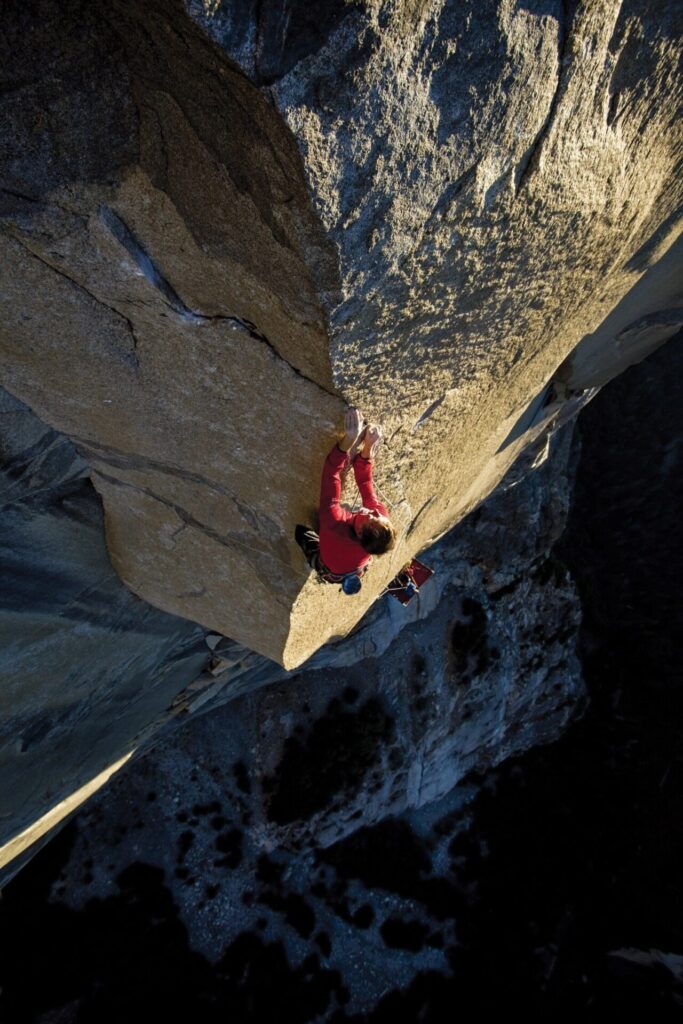
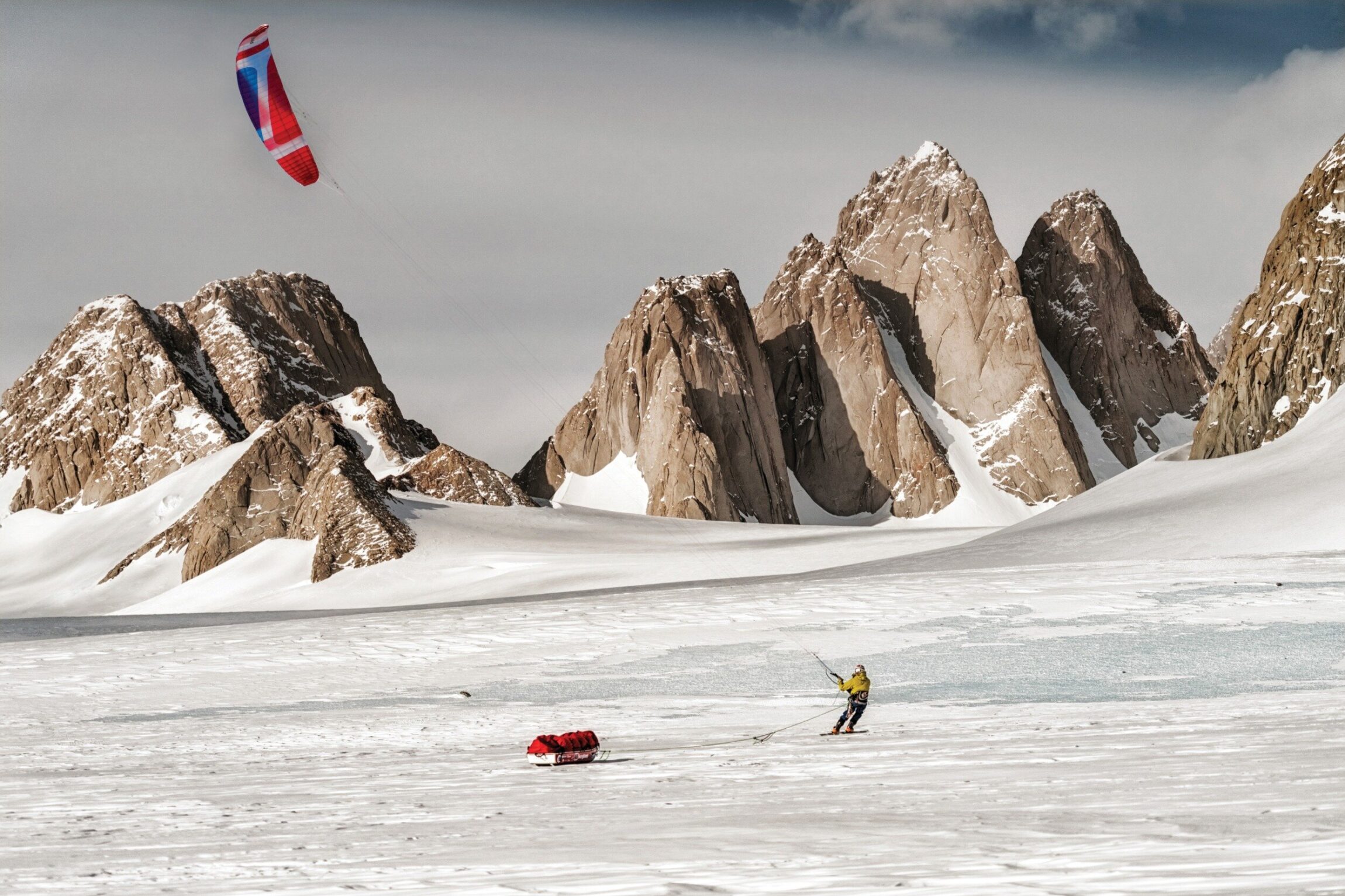
The accident on Cerro Torre in 2002 taught me that when you go into the mountains, you need to know what to do in a disaster scenario
Our conversation shifts a gear, and we start talking about expedition planning. Leo has become highly skilled at organising logistically complex and very expensive expeditions, such as his recent trip to The Spectre in the Transantarctic mountains. How has he met the organisational demands of such trips?
On the logistics and detail stuff I’ve largely learnt along the way. One person who has helped a lot with the project management side of things is Bruce Correy, a friend of mine who’s a kite skier and chartered accountant. The highly analytical and calculated approach he uses is very useful for complex expeditions. You will fail on a complex expedition if you don’t do all your groundwork.
A few years ago, when Leo and I were discussing professionalism in climbing and mountaineering, I strongly remember him remarking that nobody is ever paid just to climb. I tell him it seems like a pretty revealing insight about sponsorship in sport in general.
I think now this whole thing is possibly changing with climbing becoming an Olympic sport and the surge in professional competition climbing. But what I figured out early on is that no sponsor is interested in paying someone just because they are a good climber. There was a guy called Neil Carson who was probably the best climber in Britain in the late 1990s. And he couldn’t even get a free pair of rock shoes! In professional organised sport, there’s enough money to pay for a manager, coach, and agent, and they can monetise what you do. But climbing isn’t quite big enough to do that yet.
How difficult is it, I ask, to maintain authenticity whilst simultaneously satisfying the requirements of sponsorship?
It has been a conscious decision to maintain integrity whilst making a living. Because I’ve been involved with Berghaus for so long, they trust me to deliver material that’s valuable to them. So I’ve just done my own thing; I’m really lucky though. Seeing how professional people like the Huber brothers were was influential. They understood the importance of that process of producing high value assets from a big climb in the form of excellent photos and film footage. They showed me that it’s all part of the game.
Whilst we’re talking of authenticity, I’m curious to hear Leo’s view on the influence of social media on adventure sports.
Well, you can’t fight the tide. But I’m terrible at the whole social media game. Perhaps it’s because I’m quite an honest person, and some things are best not shared on social media, such as strong opinions. In the context of adventure social media lends itself to the mediocre and the middle ground.
Patagonia founder Yvonn Chouinard writes critically in his book Let My People Go Surfing of corporate sponsorship in what he calls ‘soul sports’ like climbing and surfing. Yet Patagonia still sponsors adventure athletes, so it’s clearly still worth something to them. What’s Leo’s view on all this?
There’s no way I would have led the life I have without corporate sponsorship. And I’ve made more money from TV work than from sponsorship, but it’s the foundational income that Berghaus has provided that’s been the basis of me leading the life I have lived. But maintaining integrity whilst providing results for a big corporation is a constant challenge.
Leo started BASE jumping in the mid-2000s and quickly began using it as a method to descend from big walls. He and Tim Emmett watched a fellow BASE jumper, Dwayne Thomas, hit the ground at high speed and die on impact in Switzerland shortly after they began jumping. How did witnessing Dwayne’s death affect him at the time?
It affected me and Tim heavily. It was awful. It was actually on the very first BASE jumping trip for Tim and I. Dwayne’s wife was with us, which made things much worse. It was just horrendous. There’s no glory in death, it’s just a mess. It helped me and Tim stay alive, though, because we walked away and thought ‘this isn’t that cool’. It helped us to stay safe and not push too hard. But the itch to jump didn’t go away.
I suggest that the danger-versus-experience correlation in BASE jumping and wingsuit flying seems unusual: you get better at it, and it becomes exponentially more dangerous as you fly faster and closer to objects. That’s not true of most other adventure sports, which get less risky as you build experience. Is this the reason for the very high percentage of BASE jumping fatalities, I wonder, or are there other factors?
Okay, so this is a very complicated issue. One of the things to note with wingsuit proximity flying is that it’s remarkably easy. In a year after watching a YouTube video of someone BASE jumping you can be flying down something crazy. The really good guys are flying at a high level of control and able to deal with unexpected things like turbulence, of course. Most other adventure sports take years or decades to get to a high level. Climbing, for example, is very hard and requires real intelligence to get to an elite level. So there’s a crucial personality type issue here. The people who are attracted to BASE jumping are attracted to the danger and to adrenaline. So they’re not usually safety conscious. By sticking to certain rules you can BASE jump in relative safety, but for thrill-seeking people where’s the fun in that?
Veteran British mountaineer Doug Scott has said that a good climber is one who’s still alive. Surely the same could be said of BASE jumpers. Is there a certain sixth sense that’s kept Leo safe?
A friend of mine, Dougs McDonnell, is perhaps the world’s most experienced BASE jumper. He’s done thousands and thousands of BASE jumps. But he still gets nervous before jumping! That instinctive sense of danger has kept him alive, because the more dangerous the activity the more safety conscious you have to be. And I always remember my friend Shaun Ellison’s mantra [Shaun taught Leo to BASE jump]: If in doubt, do not jump.
Leo is the now the father of two young children. In what ways has fatherhood changed his approach to risk?
I’d have to say it has changed my approach to a degree, but at there same time I’ve never had a death wish. I got married in 2005, and once you get married it’s not just about your own life anymore. I’ve always been conscious of Jessica throughout the high risk stuff. And with kids it does change the dynamic, because you have dependents as well.
Leo’s good friend and climbing partner Sean Leary was killed wingsuit flying in Zion in 2014. What affect did Sean’s death have on Leo’s desire to BASE jump?
I did my last BASE jump when Jessica was eight months pregnant with our daughter, and I had originally intended to carry on BASE jumping after we’d had kids. But when Sean died, his girlfriend was eight months pregnant with their first child. And it changed my view. I had spoken to him about two weeks before he died, and he was apprehensive about being a father. I tried to explain to him that the unconditional love you have for children is incredibly powerful. But he pushed extremely hard, and he screwed up. I spoke to Tim Emmett just after Sean died and Tim just said I’m gonna quit BASE jumping. And that said something to me. I couldn’t imagine saying goodbye to my wife anymore when she knew how dangerous it is. I realised that when you become a parent you have a duty of care, so you’ve got to reign it in a bit. But you can’t cease to be the person you are. So you’ve got to find a balance between that duty of care and living your own dreams and aspirations.
But does Leo miss the rush of BASE jumping?
Yeah, I do. But not as much as I used to miss it. You don’t get that same rush from climbing. Climbing’s so much slower, so much more drawn out. In a sense it’s the opposite of fast, gravity aided sports like BASE jumping, skiing, downhill mountain biking, or whatever.
In 2014, Leo had an unusual near-death experience. I ask him about Malaysian Airlines flight MH17.
In July 2014, I went to Borneo to make two TV shows for Discovery Channel. In one of them, we were to climb a big overhanging limestone wall. Our schedule changed at the eleventh hour, and I got a later flight than planned. Then, as I was on my way out I found out that MH17 had been shot down by Russian separatists on 17th July while flying over eastern Ukraine.
I’d had a ticket booked on that flight. It really affected me, and in a way it really re-invigorated me to keep doing what I’m doing. Any of us could die tomorrow. In a strange way it got me psyched again.
Leo and Jessica got married fourteen years ago. How important has Jessica been in his life?
She’s been extremely important. Your life partner is such a huge part of your life, particularly when kids come along. We would have never been together if she hadn’t accepted my life as a climber. She’s kept me tied to the UK in a way too, and perhaps I would have pushed harder with BASE jumping without her. If I’m being really honest, perhaps I wouldn’t be sitting here now having this conversation if it hadn’t been for her.
Don’t do something because somebody else thinks it’s cool, or because somebody tells you that you should do it
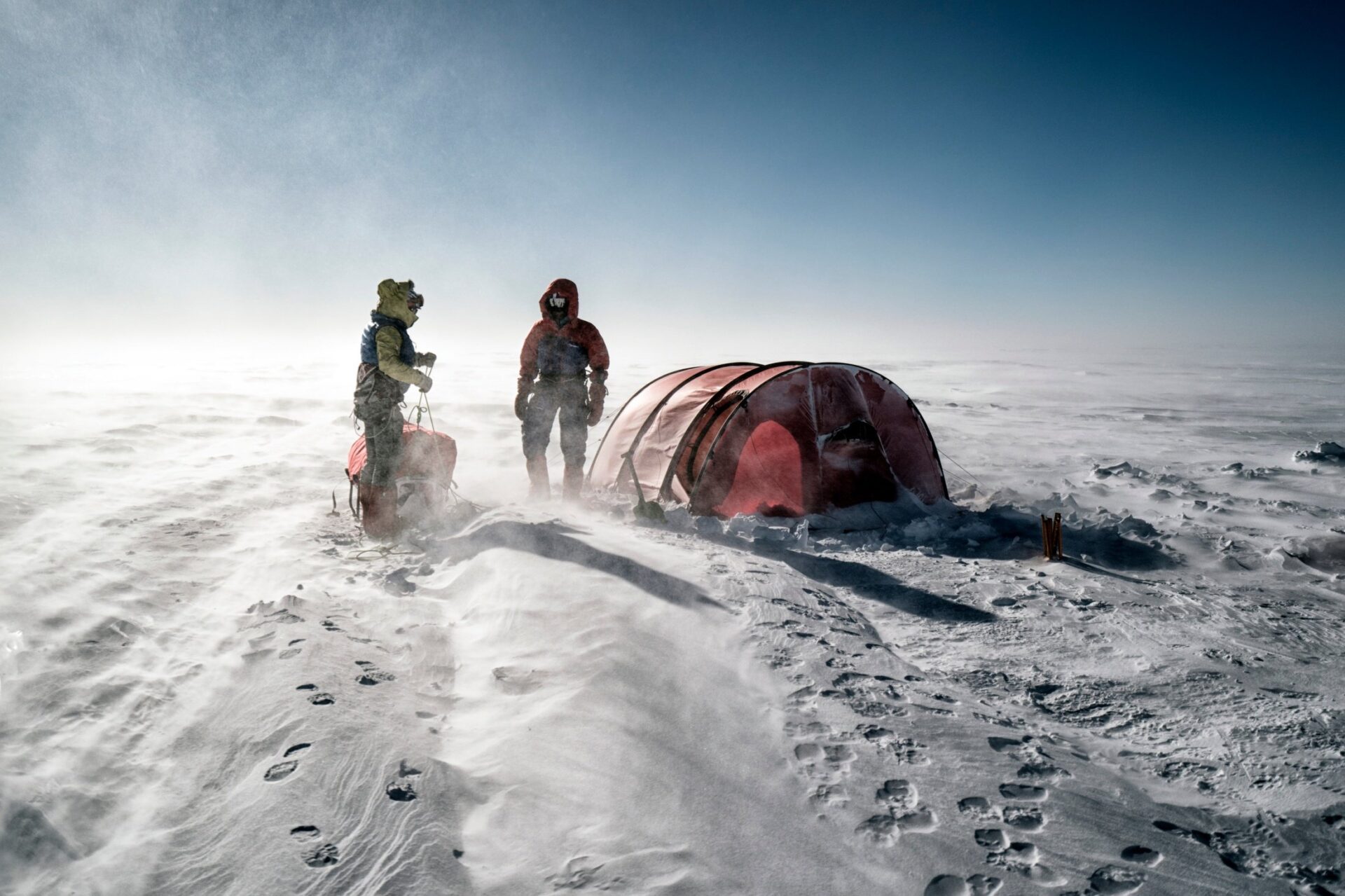
Uncertainty and risk are central to adventure. The outcome cannot be known beforehand. If the outcome is known, it’s not an adventure
Leo made a move into adventure documentary filmmaking in 2009. Firstly he produced and starred in Alastair Lee’s film of his expedition to climb a new route on Mount Asgard in Baffin Island. He then went on to make another two feature-length expedition films with Alastair: Autana and Ulvetanna. I ask him if The Asgard Project – the 2009 trip and subsequent film – was an important transitional moment.
Yes it was. It was the first proper big expedition I ever organised, somewhere really remote with a major objective, and in order to make a high production value film of the expedition. Asgard marked my transition away from pure rock climbing towards bigger objectives and real exploration.
We start talking about how exploration has changed in the last hundred years, and Leo suddenly makes what strikes me as a profound and intriguing observation.
20th Century exploration was very much about filling in blanks on the map, and about conquest, about being the first. Now it’s got nothing to do with conquest. It’s more about finding new dimensions in wild landscapes, and about using modern technology to explore the world in interesting ways.
Leo made the first ascent of his Yosemite climb The Prophet in 2010, after a nine year journey from his first attempt on the climb in 2001. I ask him if completing that particular route felt like a high point in his career as a rock climber.
Yes, in one way it did. It also felt like I’d closed a chapter in my life. Life is about priorities. We all have them. But you can only prioritise so much. I realised that to climb something harder than The Prophet I’d have to take a different approach. I knew that I could probably never perform better than I did when I sent the crux pitch of The Prophet after Jason Pickles and I waited out that three day storm on our portaledge.
Leo’s focus shifted from adventure rock climbs into multi-disciplinary expeditions at the same time as he climbed The Prophet. Was that a conscious choice or a natural process?
I think the motivation was fundamentally still climbing big walls. The climbing remains central and it gives a sense of purpose. Even with BASE jumping or kite skiing as part of the process, the climb still remains the objective. Climbing involves large amounts of uncertainty. And uncertainty and risk are central to adventure. The outcome cannot be known beforehand. If the outcome is known, it’s not an adventure.
Our conversation moves to Antarctica. The Ulvetanna expedition to Queen Maud Land was Leo’s first trip in 2012. He then went back again in 2017 on an even more ambitious journey. What, I ask him, is so captivating about the great southern continent?
It’s got this unique allure. There’s something about it. In a romantic way, it epitomises adventure. Humans never made it there. It remains the ultimate terra incognita. It’s the sheer emptiness, the desolate nature of the place. The reality of being there is different though. You have to be cautious because just being there itself is dangerous. You have to take two satellite phones to make a daily call to tell your logistics provider to let them know that you’re okay. If you miss a call they put you on high alert, and if you miss two calls they initiate a rescue. Satellite communications have changed the nature of adventure in very remote places. I wouldn’t go into a really remote place now without proper communications equipment.
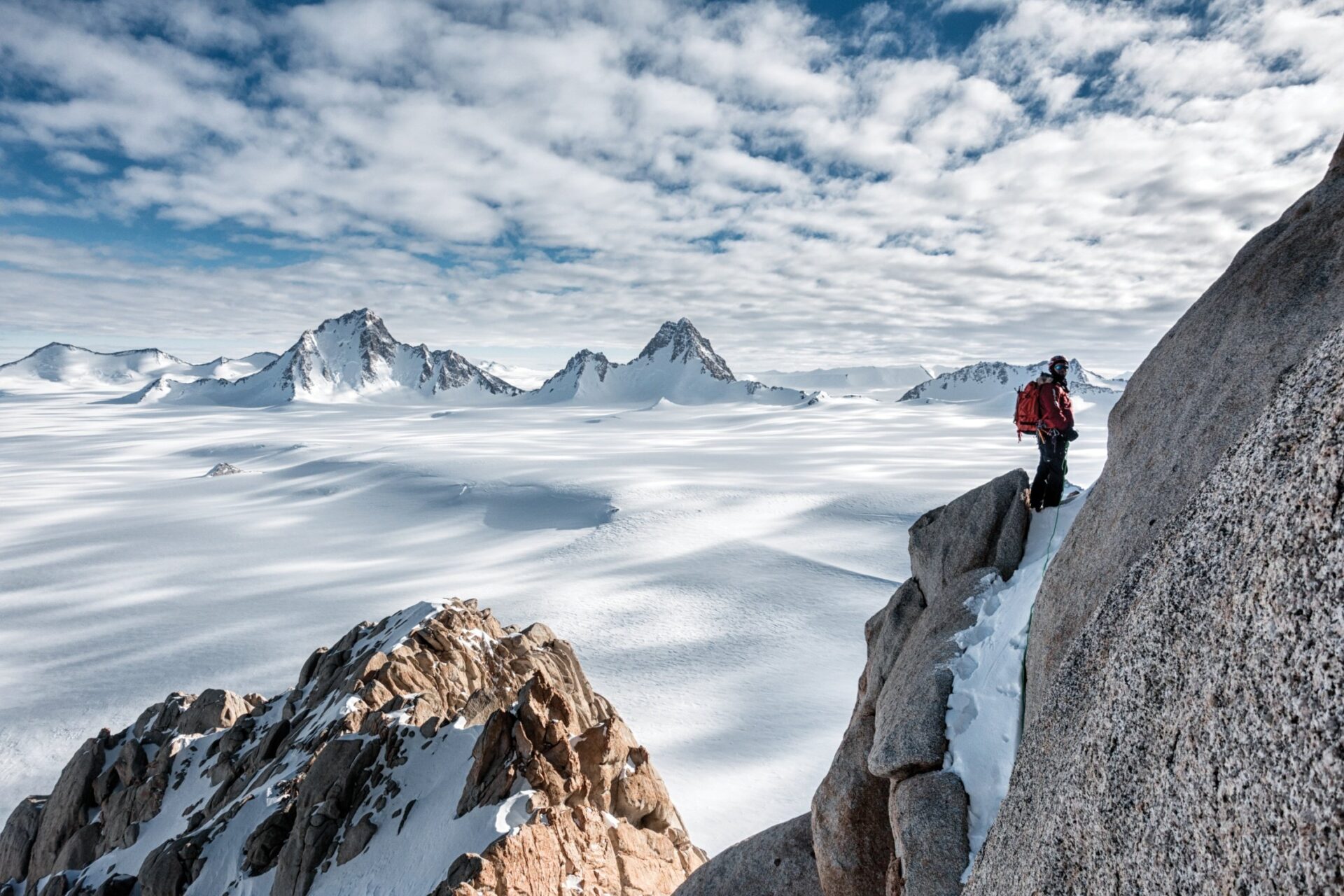
What is it about Antarctica, I wonder, that gives it such centrality in the British exploratory imagination. Is it partly the stories of Scott’s and Shackleton’s ill-fated expeditions?
We grew up with those stories of Scott and Shackleton, of course, but I think there’s something about the extreme landscape of Antarctica itself that has a powerful allure.
I ask Leo if he can summarise what self-supported travel and climbing in Antarctica is like, in contrast to other places?
It’s mainly the cold and the extreme remoteness. But it isn’t that different to Baffin Island or Greenland in some ways. The main difference is the expense! When it’s sunny and there’s no wind you can actually climb without gloves. But when the wind picks up it’s instantly sub-zero. The windchill is just so extreme.
Leo started training to kite ski in 2011 in Greenland and Norway. Did he initially take up kite skiing with the notion of doing a big Antarctic trip?
Yes. The idea was that it could be a tool for long distance travel in cold regions. As with using BASE jumping to descend from big walls, it’s a simple concept but there are relatively few places where it actually works: Norway, Greenland and Antarctica mainly. You need vast, fairly flat icy spaces and constant wind.
The Spectre trip was a success. Leo and his team kite skied into the Spectre massif and made the second ascent of The Spectre itself. I tell Leo it strikes me that the fact they pioneered a new format for a polar expedition was the most important thing about the trip, and that kiting into and away from the mountain looked harder than the climb itself.
Yeah it was, it was a thousand miles of kite skiing in total. We actually only climbed for two days, there were ten days of bad weather, then about thirty travelling days, then ten days in which we couldn’t travel due to bad weather or lack of wind. If we’d climbed the big central pillar of The Spectre it would have meant more to me. But the price of ambition is that you’re never properly satisfied.
The weather got pretty bad shortly after Leo’s team got back to base camp after the climb. Since the Spectre is one of the most remote places on earth, I wondered how strung out Leo felt on the climb, with the bad weather apporaching fast?
More strung out than I’ve ever felt in my life! If the weather had stayed fine it would have been alright. But when the weather’s bad in Antarctica it’s a full-on survival situation. The forecast on our summit day was wrong, and that was a problem.
One of the key features of Leo’s career has been creative diversification into multi-disciplinary expeditions; combining climbing with BASE jumping and kite skiing to create an adventure that’s more than the sum of its parts. Can he explain why this approach is important?
There’s nothing wrong with chasing records, but I think it’s important to use the new tools and knowledge that we now have to do something that’s not been done before. With modern technology you can do amazing stuff that’s completely new.
The Spectre is one of the most remote places on Earth. I was more strung out up there than I’ve ever felt in my life
I mention how Robert Jasper recently sea kayaked into a remote fjord in Greenland to make a solo first ascent. I wonder if Leo is tempted to approach a big climb on the water, by kayak or some other craft?
Definitely. I’ve got a folding sea kayak. But the trouble with climbing is that you need so much stuff!
The mountaineering journalist Ed Douglas once wrote of the great British climber Joe Brown that ‘he always found new directions to explore, and maintained that sense of excitement and freshness in his life, decades after the initial discovery of what climbing could offer him’. For me personally, these words are a brilliant mission statement for an adventurous life. I tell Leo they could describe his approach pretty well too.
Absolutely. That’s what the Spectre trip was about, finding an exciting new direction in adventure to explore. Next time I go there I’d like to kite all the way from Union Glacier to the Spectre, in and out. That would be the perfect way to do it.
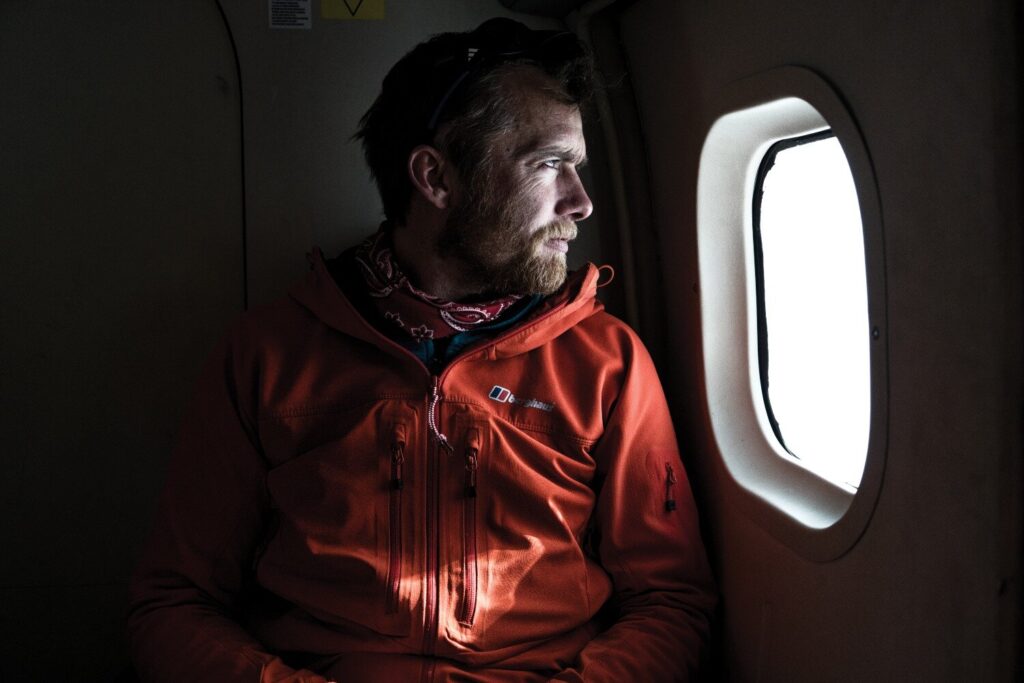
How would Leo sum up his own philosophy of adventure?
True adventure has to involve true risk and true uncertainty, and to have a creative element.
I ask him about the weirdest thing that’s ever happened to him on an expedition. He smiles and chuckles back:
It was definitely taking Yopo [an extremely potent hallucinogen similar to ayahuasca] in Venezuela. It was just so full on. It was, in fact, the most terrifyingly powerful and intense experience of my life.
I ask Leo what he feels has been his biggest mistake in twenty five years of climbing, adventuring, and exploring? He suddenly laughs and cuts straight back:
Not bringing a portaledge with an expedition flysheet to the Spectre, because then we could have actually tried to climb the big central pillar.
What advice would he give to aspiring young adventurers today?
Take it one step at a time and follow your heart, and don’t do anything because somebody else thinks it’s cool, or because somebody tells you that you should do it.
As we begin to wrap up the interview, I go back to Leo’s roots, and ask about his favourite climbing areas in Britain and beyond.
In the UK, it’s North Wales for sure. It has such strong memories for me, and a huge diversity of climbing within a small area. Elsewhere, Yosemite in general is just so good.
Finally, what luxury would he take to a desert island?
A really sweet bivy set up. A good’s night’s sleep is so important when you’re out there!
Leo hurries out the door as quickly as he arrived, en route to the next lecture in his UK tour promoting his film of the Spectre expedition. The coffee is long gone, and I suddenly realise we’ve been talking for almost four hours. Leo leaves an aura of restless energy and ambition in the air.
An extraordinary drive to find new things and to do new things defines the life of Britain’s most inventive modern explorer. Yet beyond his achievements themselves, it’s the fierce intelligence and real curiosity behind it all, I think, that gives Leo Houlding such soul in the game.
This story was first featured in issue 01 of BASE magazine. Stay up to date with all the latest adventure interviews, expert gear reviews and stories to inspire by to subscribing.
Don’t miss a single adventure
Sign up to our free newsletter and get a weekly BASE hit to your inbox
Other posts by this author
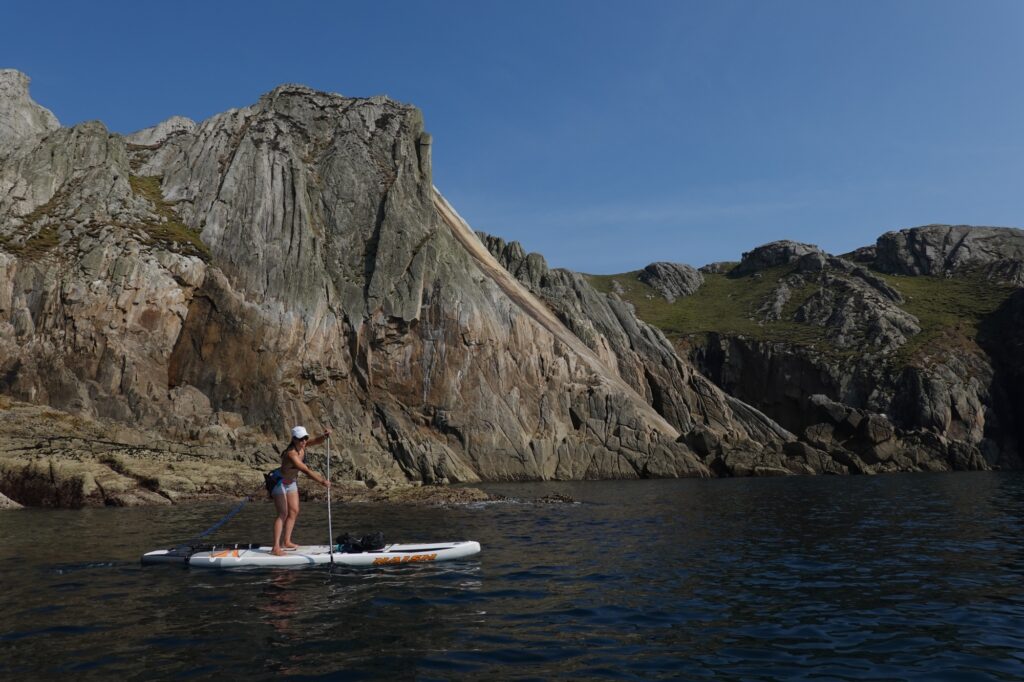
Story • David Pickford • Apr 12, 2023
West by Northwest: Lundy Island by Standup Paddleboard
An open-water SUP voyage from the north coast of Devon to the iconic island of Lundy
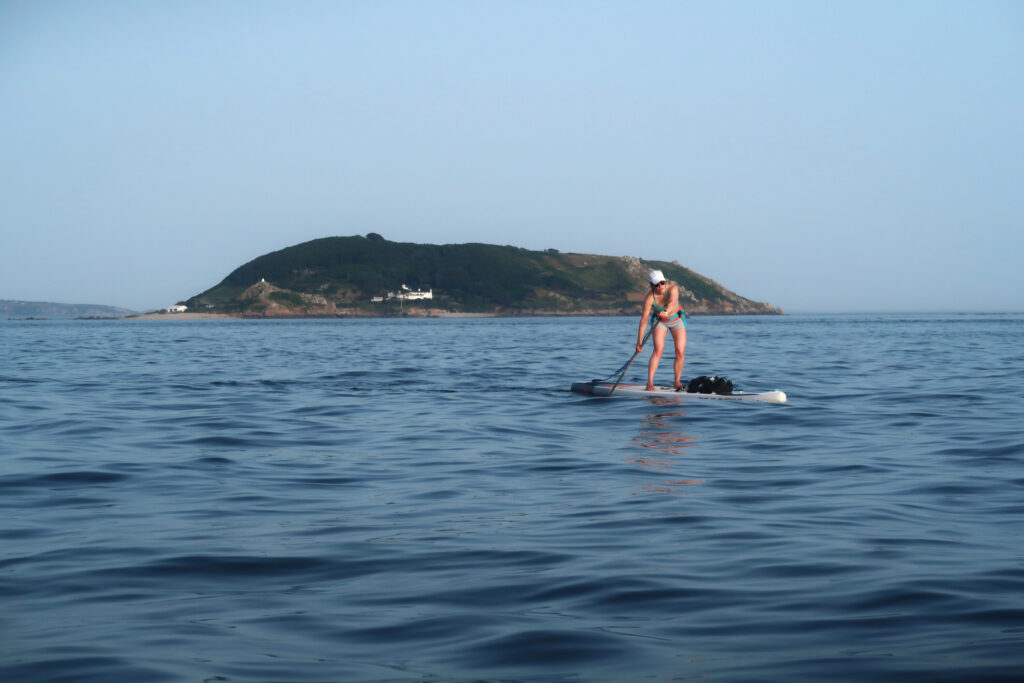
Story • David Pickford • Jul 24, 2022
Vectors in the Stream
A voyage between islands across some of the world’s strongest offshore tides
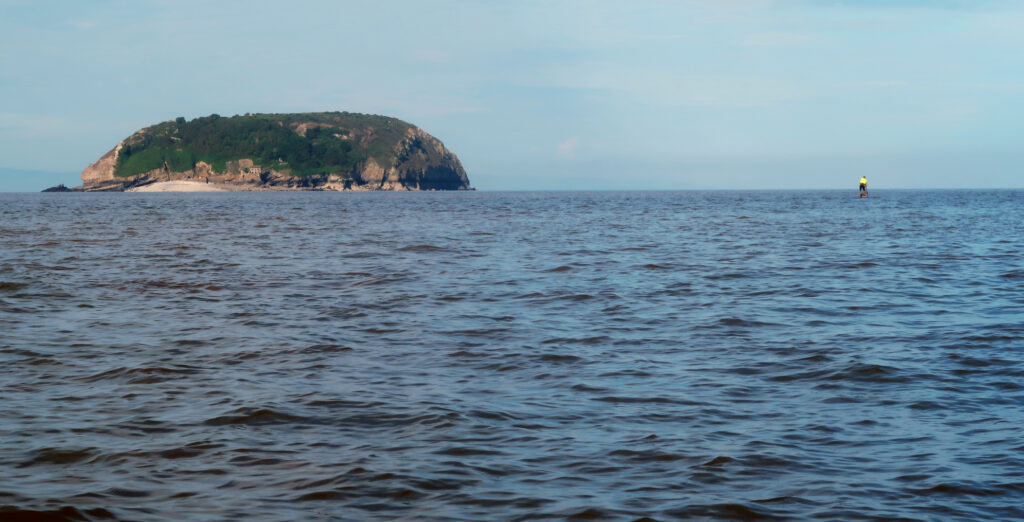
Story • David Pickford • Feb 04, 2022
Tidelands
Travels in the unexpected wilderness of the Bristol Channel
You might also like
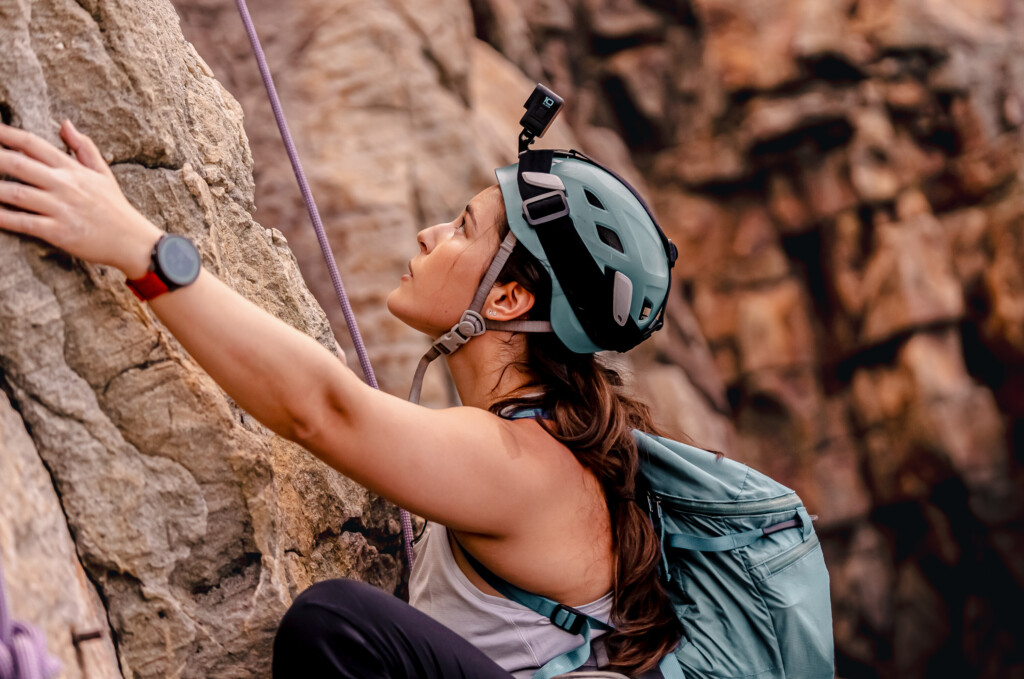
Photo Essay • BASE editorial team • Mar 18, 2024
Hunting happiness through adventure in Taiwan
BASE teams up with adventurer Sofia Jin to explore the best of Taiwan's underrated adventure scene.
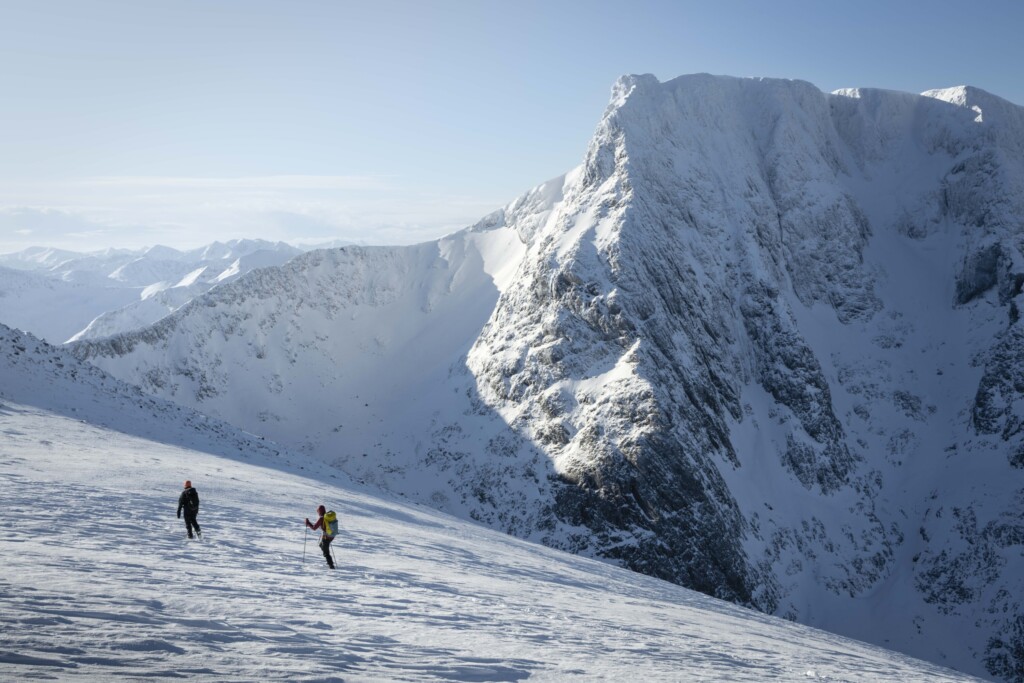
Story • BASE editorial team • Nov 21, 2023
Five Epic UK Climbs You Should Try This Winter
Craving a snowy mountain adventure? Inspired by the Garmin Instinct 2 watch (into which you can directly plan these routes), we've compiled a list of five of the best for winter 2023-24!


Video • BASE editorial team • Jul 04, 2023
Zofia Reych On Bouldering, Life And Neurodivergence
Climbing is a driving force in Zofia's life, but for a long time, it also seemed to be a destructive one
